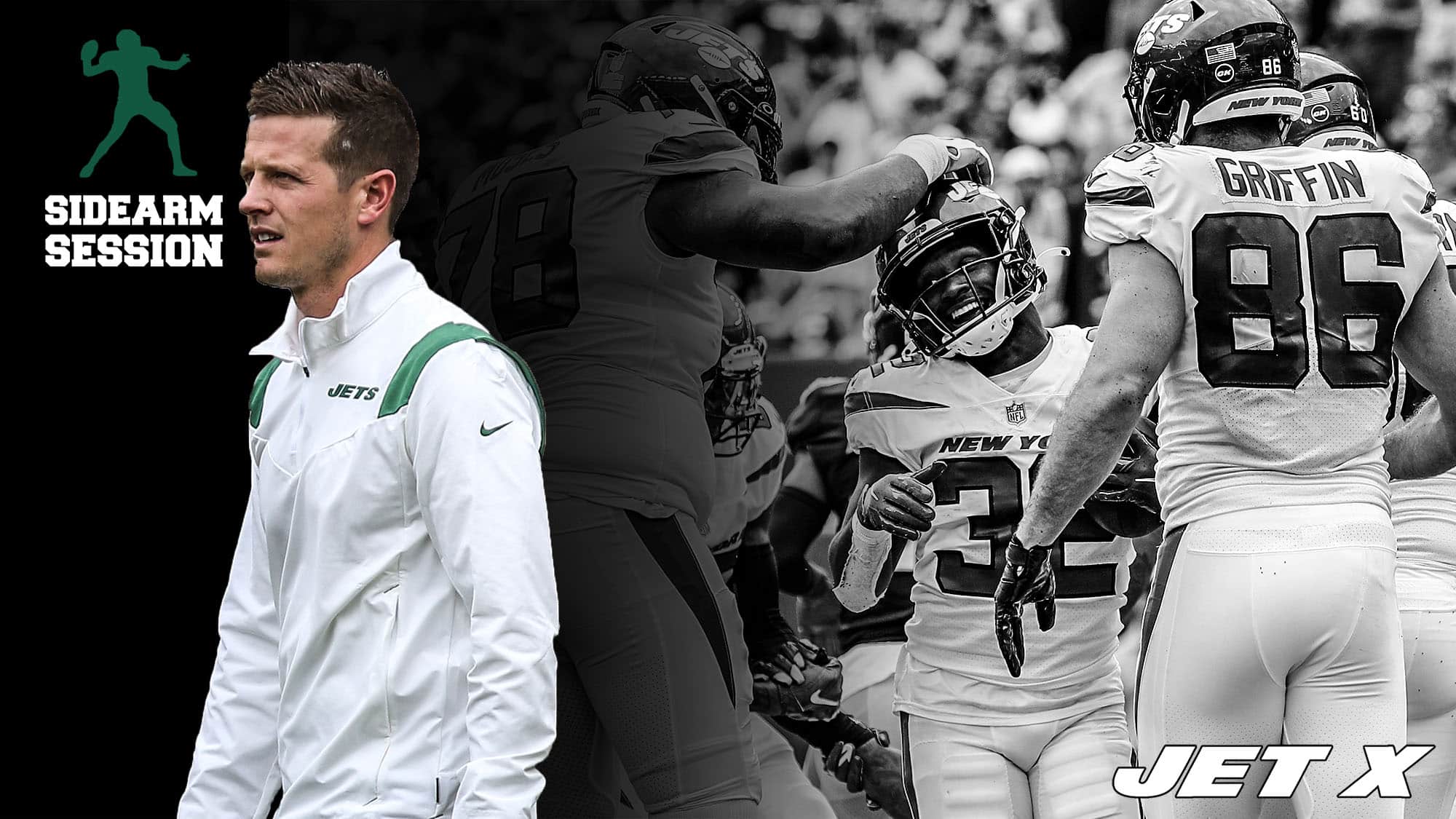The Jets’ offensive system depends on a good running game to excel
Forget the long dropbacks and the deep shots. This New York Jets offense starts up front and on the ground.
At the very least … it should.
When thinking of Shanahan’s east/west, edge stressing attack, the premise is usually the same—no matter which disciple is running it. We’re talking about the rushing attack, of course.
With an effective running game, the offense can stretch the defense horizontally and keep freakish edge rushers honest. In addition to that, a good running game moves second-level defenders off their spots, making it easy to attack open zones via play-action or leveled routes.
Running the ball effectively is the premise and the foundation of this system, and it’s no different in this Jets-specific situation.
Similar to Zach Wilson, Mike LaFleur is another Jets’ character that needs to get back to his [system’s] foundations
The Jets offensive coordinator has not been as bad as some fans label him. Nonetheless, he needs to run the ball more, as building a more solid running attack is priority No. 1.
Those who quit watching the Jets film after the first half of this season’s Week 1, the sentence above might sound like a joke. In Week 1 part one, LaFleur indeed looked like a young Shanahan guy.
The Jets offensive coordinator ran the football nearly to a fault against Carolina’s loaded boxes. The intention to build an identity was clear.
Since then, though, LaFleur has taken the opposite approach. Despite running the ball often of first down, LaFleur quickly shies away from it—no matter how good his line or running back look.
It’s almost like the Jets play-caller turned a halftime adjustment against the aggressive Carolina Panthers’ defense into the system’s norm.
Ditching the run is a self-damaging approach within this scheme
Running the ball effectively is to the Shanahan system what drinking water is to human beings: crucial, life-sustaining.
The numbers say that LaFleur has been running the football quite frequently on first down, but the overall picture has the Jets currently ranked sixth in the league in Passing Play Percentage, at 64.51%.
The #Jets have run the ball on 70.6% of their 1st-down plays in the 1st quarter, which leads the NFL
Wilson has thrown only *5* passes on 1st down in the 1st quarter this season
Got to do a better job getting him in an early rhythm
— Michael Nania (@Michael_Nania) October 11, 2021
Even the Green Bay Packers—coached by Matt LaFleur, Mike’s older brother—are throwing the ball at a lower rate than the Jets, at 58.96%, per NFL Football Stats.
It’s almost like LaFleur, a play-caller who favors pass plays (he was the passing game coordinator at San Francisco), runs the football on first down only to take some weight off his conscience.
There’s something wrong when a Shanahan tree coach with a higher Passing Play Percentage (save for Sean McVay) is the one with a rookie quarterback at the helm.
The first touchdown in London: An indication of change
The Jets’ first touchdown drive in London indicated that changes might be on the horizon. LaFleur’s approach right after the second-half kickoff, while trailing 20-3, is telling.
It shows he knows the importance of an effective ground game—especially with a struggling rookie quarterback. The problem is simply this: He just forgets about it too quickly—although, admittedly, the circumstances are never ripe to keep it on the ground.
After Tevin Coleman sparked the entire offense with a big return, the Jets had a seven-play, 29-yard drive that resulted in a touchdown run by Ty Johnson.
Six runs and a jet-sweep pass to Braxton Berrios, while the Falcons were up 20-3, consisted of the drive that culminated in the Jets’ first touchdown of the game.
Prior to the season, that’s what everyone thought this offense would be: run-oriented with a heavy reliance on zone schemes and a ton of pre-snap motion behind it.
Take a look at the touchdown drive against Atlanta:
The bye week is a great time for LaFleur to go back to his system’s foundations
Run, misdirection, and manufacturing open space touches for speedy guys represent the foundation of the offense, and that’s what LaFleur needs to go back to now.
Yes, Wilson needs to trust the scheme and stop trying to do too much on an every-down basis. But LaFleur, first and foremost, needs to make the scheme work by going back to its premises.
Not only will it lead to a more efficient offense, but it will also help Zach Wilson snap out of his current mental-driven funk.


